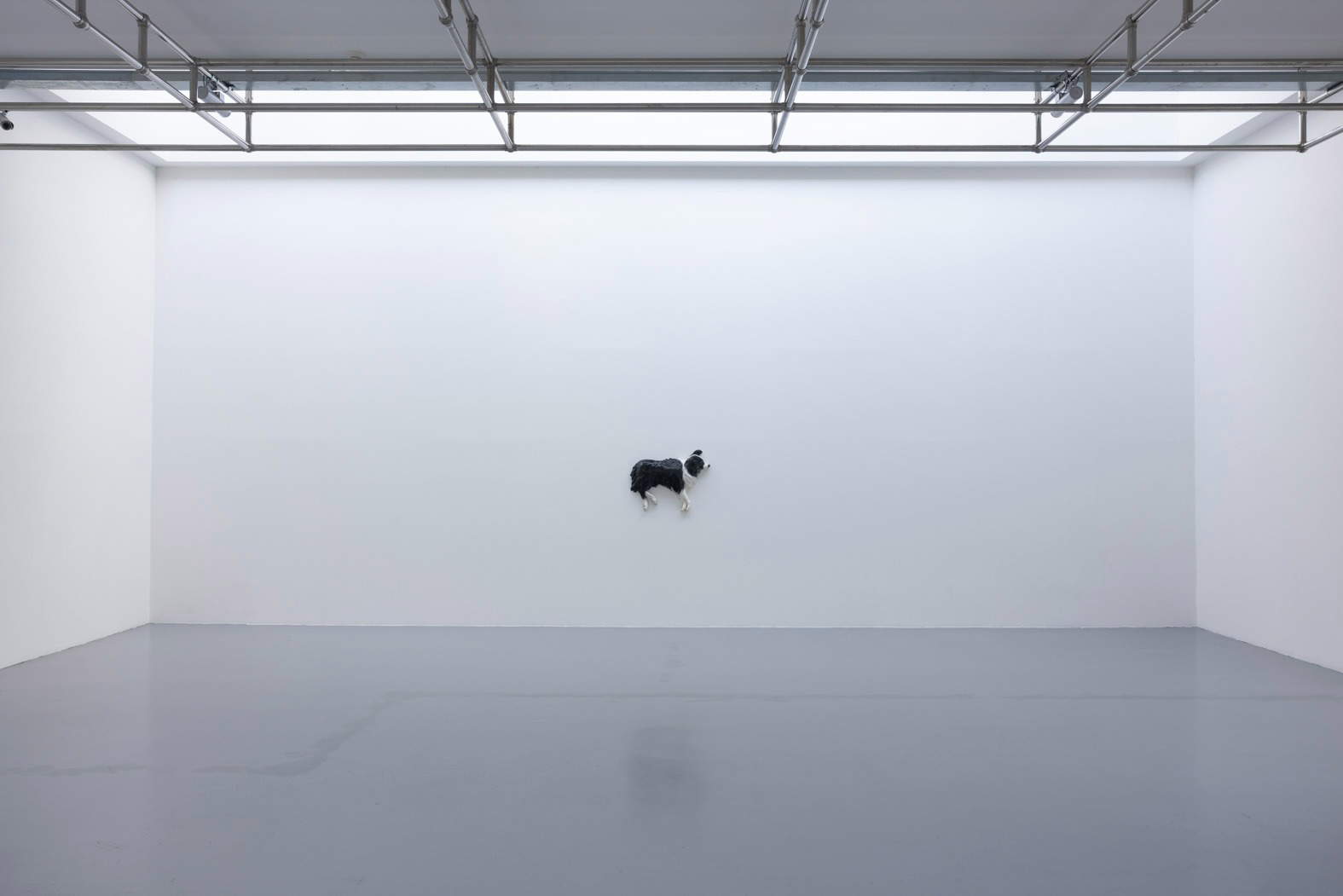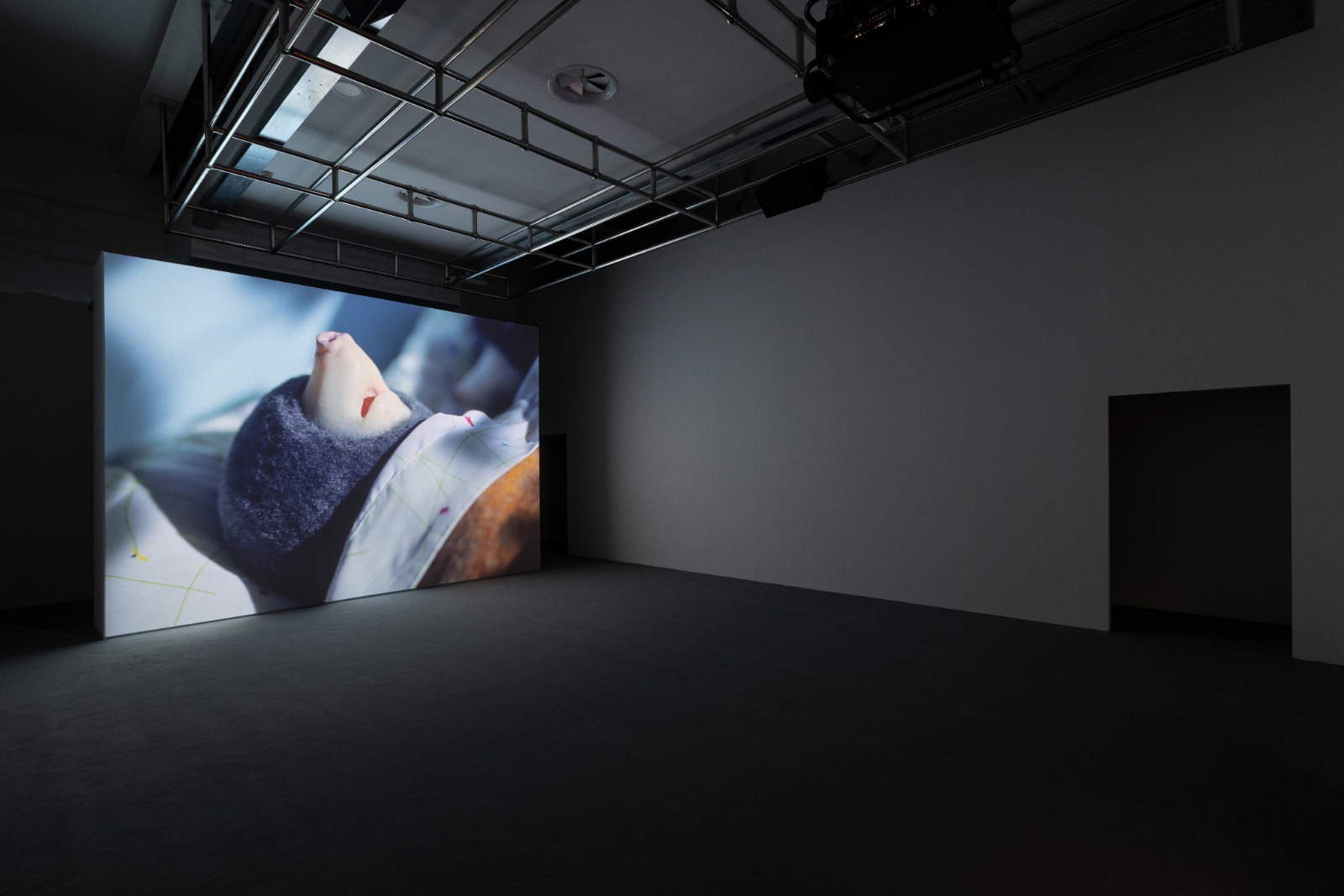At Pecci in Prato, the largest Diego Marcon exhibition in an Italian museum
One of the most acclaimed contemporary Italian artists, Diego Marcon (Busto Arsizio, 1985), is the protagonist of an exhibition at the Pecci Center in Prato. Glassa, this is the title of the show, is the largest exhibition project to date by Diego Marcon in an Italian institution, opening to the public from Sept. 30 until Feb. 4, 2024. Invited in January 2022 by director Stefano Collicelli Cagol, the artist, strong by now of his international success (he was one of the protagonists and most discussed artists at the last edition of the Venice Biennale), has made the ten rooms of the Gamberini wing his own, transforming them into an immersive experience through new or existing works arranged in a unique setting designed specifically for the Pecci Center.
Curated by Stefano Collicelli Cagol and Elena Magini and supported by Intesa Sanpaolo, Glassa presents films, videos, animations, sculptures, and publications, through which Marcon investigates universal themes such as the meaning of life and death, often using theinnocent ambiguity typical of childhood or of puppies as a useful key to rethink everyday life.

The word “frosting” comes etymologically from the French word glace; and it refers, in the context of pastry, to the coating of sugar and other liquids used when hot to cover or decorate cakes: so sweet as to become almost nauseating, so smooth and thick as to hide any roughness underneath. Moreover, the word recalls ice, something cold as only death can be and capable of preserving corpses. Approximately 1,000 square meters of space are, therefore, transformed by Marcon into a cinematic apparatus; thanks to targeted lighting with skylights in the ceiling, the audience is immersed in an experience balanced on the dialogue between the treatment of emptiness, light and shadows.
By choreographing the movement of visitors in space, considering the use of the void, the passage of time, changes in light and the power of moving images, Diego Marcon sets up an experiential machine where everything is under his meticulous control.

“The Gamberini rooms of the Pecci Center,” Marcon declares, "have always been one of my favorite museum architectures. Perhaps this is also why the design of the exhibition took shape so naturally. I worked on Glaze very freely, having a lot of fun."
Two series of dead ceramic dogs dot the exhibition’s path, posted against the walls in an extreme act of modesty and awe. TINPO, 2006, is the first film made by Marcon: in a typical Italian interior during a family lunch, two children play at war. Untitled, 2017, is a very short animated short in which a little girl dances frantically, while the noise of the 16 mm projector punctuates the passing time. The last room hosts the film Dolle, 2023, featuring Daddy and Mommy Mole, two animatronic sculptures, who constantly miscount while their children sleep. This complex exhibition machine, a metaphor for cinema where light continually creates new images, hosts a searching journey into the meaning of art, its manic perfection, and death. Dolle (2023) is, moreover, the winning project of the “PAC2021 - Plan for Contemporary Art” promoted by the Ministry of Culture’s General Directorate for Contemporary Creativity and intended for the Pecci Center’s collections.
In Glaze, each person is called upon to find his or her own response by confronting intense pleasures, a sense of emptiness and a dizzying precipice, just like life. A work, Marcon’s, on the border between cinema and visual arts aimed at investigating the relationship between reality and representation and identifying in the moving image a tool for researching reality itself.
“Marcon’s visionary approach will captivate children and adults alike for its ability to touch on universal themes, such as life and death but also the meaning of art,” explains Stefano Collicelli Cagol. “Marcon uses elements that immediately connect to our lived experience, childhood or little dogs, generating contrasting emotions and a sense of vertigo that exploits the potential of the architecture created in 1988 by Italo Gamberini at the Pecci Center. We are convinced that the exhibition will conquer all types of audiences, under the banner of that special attention to the community that has always been the hallmark of our museum institution, a reference point of contemporary art for the entire country as well as internationally.”

"Glassa,“ says Elena Magini, ”is an exhibition that we can perceive as a whole: a set of works that link with each other and in turn with the architecture of the museum, generating an unprecedented sensory and visual experience. It was really interesting for me to engage with an artist who has such a strong sense of space and display, such a substantial sense of the laws that underlie artistic work."
“We are celebrating the 35th anniversary of the opening of the Centro Pecci,” says Lorenzo Bini Smaghi, president of the Foundation for Contemporary Arts in Tuscany, "with a major project by Diego Marcon, specifically designed for the museum. Marcon is, without a doubt, the Italian artist of the moment as well as among the most interesting on the international contemporary scene. This exhibition is the beginning of an international exhibition path that will see the artist exhibiting this fall in Basel, London and Berlin; we are, therefore, proud to have reserved more than 1,000 square meters for Glassa to deal with and to make his research better known to the general public. The exhibition will enrich the collection thanks to the work Dolle, produced in 2023 in Tuscany, adding to the masterpieces finally on permanent display thanks to Eccentrica. The Glassa exhibition is funded by private contributions, the result of fundraising work done in recent years, especially thanks to partner Intesa Sanpaolo, sponsor Cellerese and our members."
The exhibition is promoted and organized by Fondazione per le arti contemporanee in Toscana - Centro per l’arte contemporanea Luigi Pecci. An institution founded by the City of Prato and supported by the Region of Tuscany.
Diego Marcon has recently held solo exhibitions at Fondazione Nicola Trussardi, Teatro Gerolamo, Milan (2023); Sadie Coles HQ, London (2023); Museo Madre, Naples (2021); Institute of Contemporary Art Singapore/LASALLE, Singapore (2019); La Triennale di Milano, Milan (2018); and Careof, Milan (2015). His work has also been part of group exhibitions in spaces including Galerie Buchholz, Cologne (2022); La 59. Esposizione Internazionale d’Arte, La Biennale di Venezia, Venice (2022); Royal Academy - de Tempel, Antwerp (2021); MACTE Museum, Termoli (2021); Italian Cultural Institute, Paris (2021); MACRO, Rome (2021); La Quadriennale d’arte 2020, Rome (2020); Fondazione Prada, Milan (2018); and MAXXI - Museo nazionale delle arti del XXI secolo, Rome (2018). In fall 2023, Marcon will present two major solo exhibitions, one at the Luigi Pecci Center for Contemporary Art, Prato, and one at Kunsthalle Basel, Basel.
 |
| At Pecci in Prato, the largest Diego Marcon exhibition in an Italian museum |
Warning: the translation into English of the original Italian article was created using automatic tools. We undertake to review all articles, but we do not guarantee the total absence of inaccuracies in the translation due to the program. You can find the original by clicking on the ITA button. If you find any mistake,please contact us.



























